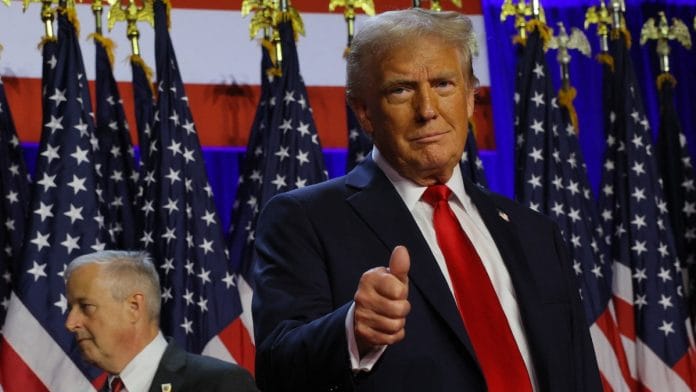Thank you dear subscribers, we are overwhelmed with your response.
Your Turn is a unique section from ThePrint featuring points of view from its subscribers. If you are a subscriber, have a point of view, please send it to us. If not, do subscribe here: https://theprint.in/subscribe/
I voted in the US presidential election yesterday. There were fairly long lines at the voting center and it certainly looks like early voting is catching on. Based on the number of whatsapp messages and pictures with the “I voted today” stickers I’ve received, it seems like a good option for those who would prefer to get this out of the way before Nov 5th. If it ends up increasing voter participation it is a good thing for our democracy.
Instructions at our voting center were in English, Spanish and Gujarati. Going by the trends in our NJ neighborhood, I think we’ll need a Telugu option for the next election.
The opinion polls at this stage are calling this a close race with no clear favorite. Irrespective of who trumps (see what I did there?) on Nov 5th, American democracy will remain strong and emerge even stronger. The fears of a fascist Trump or a communist Harris permanently damaging the American project are overblown and exaggerated. Both candidates are deeply flawed but the framework of governance ensures that the country is resilient and can bounce back from a disastrous presidential term. The powers of the presidency are limited in a number of ways and there is only so much damage a president can do.
The framers of the US constitution had the amazing foresight to put in safeguards and limits on power in the different branches of the government. The damage any one individual can do while in power is limited and can be undone over time. The system is by no means perfect, but it is by far the best model of governance that we’ve seen anywhere and anytime. A few things that make this system resilient
- Term limits on presidents – The fact that a president can serve only two terms means that their influence is limited by design. The electorate has to choose someone else after the two terms. Change is forced. No single individual can dominate political agenda for more than a decade.
- Structure of the congress
- 6 year terms for senators with equal representation for all states – A longish 6 year term allows for more considered decision making and senators don’t have to worry about short term consequences, or being elected every 2 years. Equal representation for all states ensures that decisions can be made in the interests of the whole country and not just the highly populated areas.
- 2 years terms for the house – Approximately representative of the population density of the country – this serves as a true representation of the will of the people and the short 2 year term means that house can more quickly resemble the views of the population at a given point in time.
- Senate filibuster – Regulates against the excesses of the day, forces consensus and ensures that there is broad support for any major legislative change. The views and interests of those in the minority are protected.
- Independent supreme court with lifetime appointments – This ensures that shifts in political and public sentiments can be tempered and any seismic changes that can affect most Americans can be decided by those who have a very long term perspective. Current and fleeting trends can be mitigated and moderated.
- Relatively small impact of direct citizen democracy – The system ensures that major changes can only be brought through representatives elected by the citizens – whether direct elections like those for the president or the congress, or indirect ones like the judiciary. Recent experiments with direct citizen democracy such the Brexit vote in the UK have resulted in a lot of post fact regret and hand wringing.
- Separation of powers between the federal and state governments – While this separation between the state and federal jurisdictions is not clear cut and there are many ways in which this can be made better, the country has found a way to deal with this in a reasonably efficient manner so far. State governments can experiment and front run policies that can eventually inform federal policies.
Given these checks and balances, there is reason to be optimistic about the American project. The structural integrity of the government is very robust and can withstand the very polarized nature of our current politics and trends towards populism. Each component of the structure serves as bulwark against the excesses of the others.
The current political dialogue seems very degrading, but we shouldn’t lose sight of what makes this country truly exceptional. It is important to cherish the system of government we’ve inherited and tip a hat to those who had the foresight to put these mechanisms in place.
These pieces are being published as they have been received – they have not been edited/fact-checked by ThePrint.


